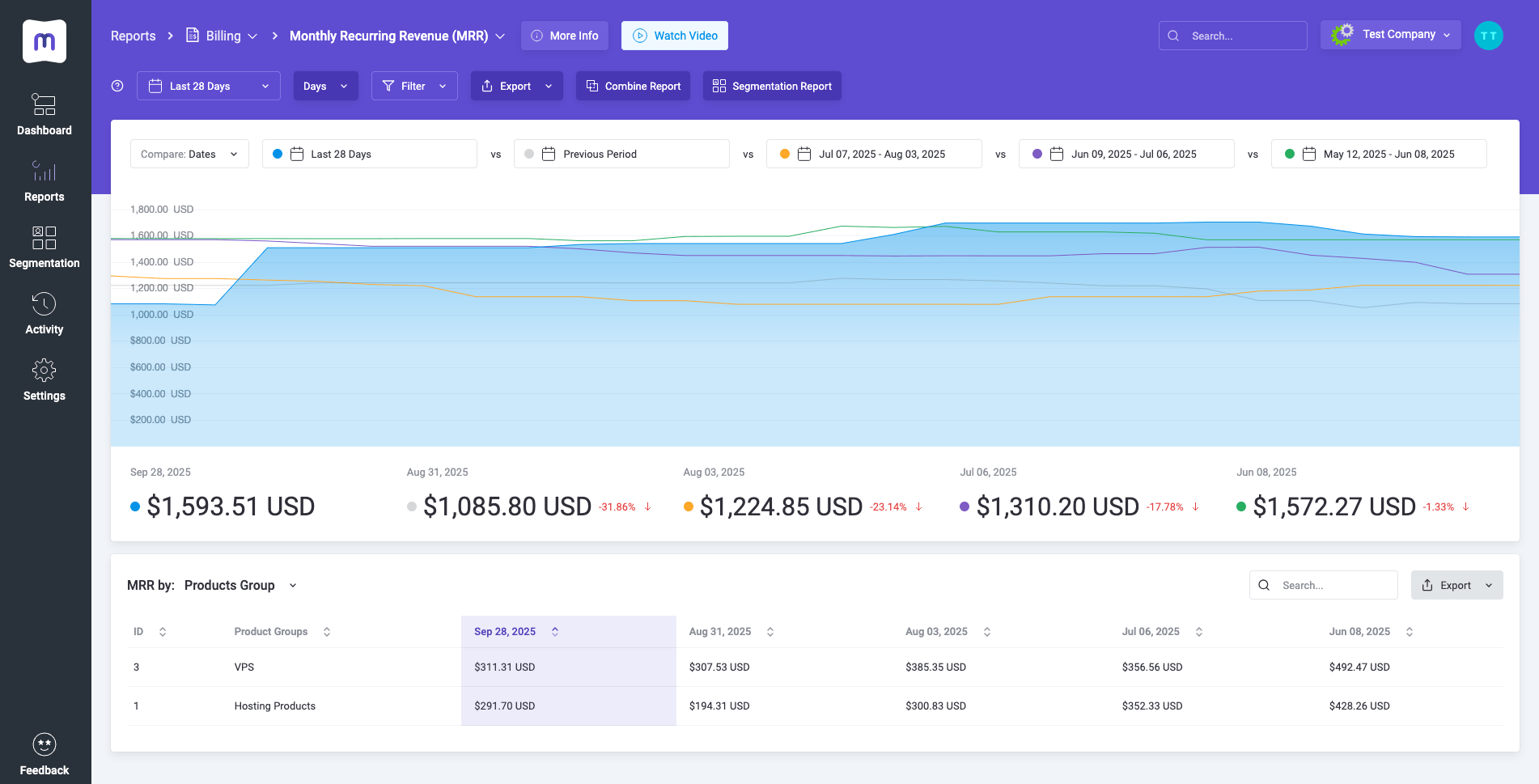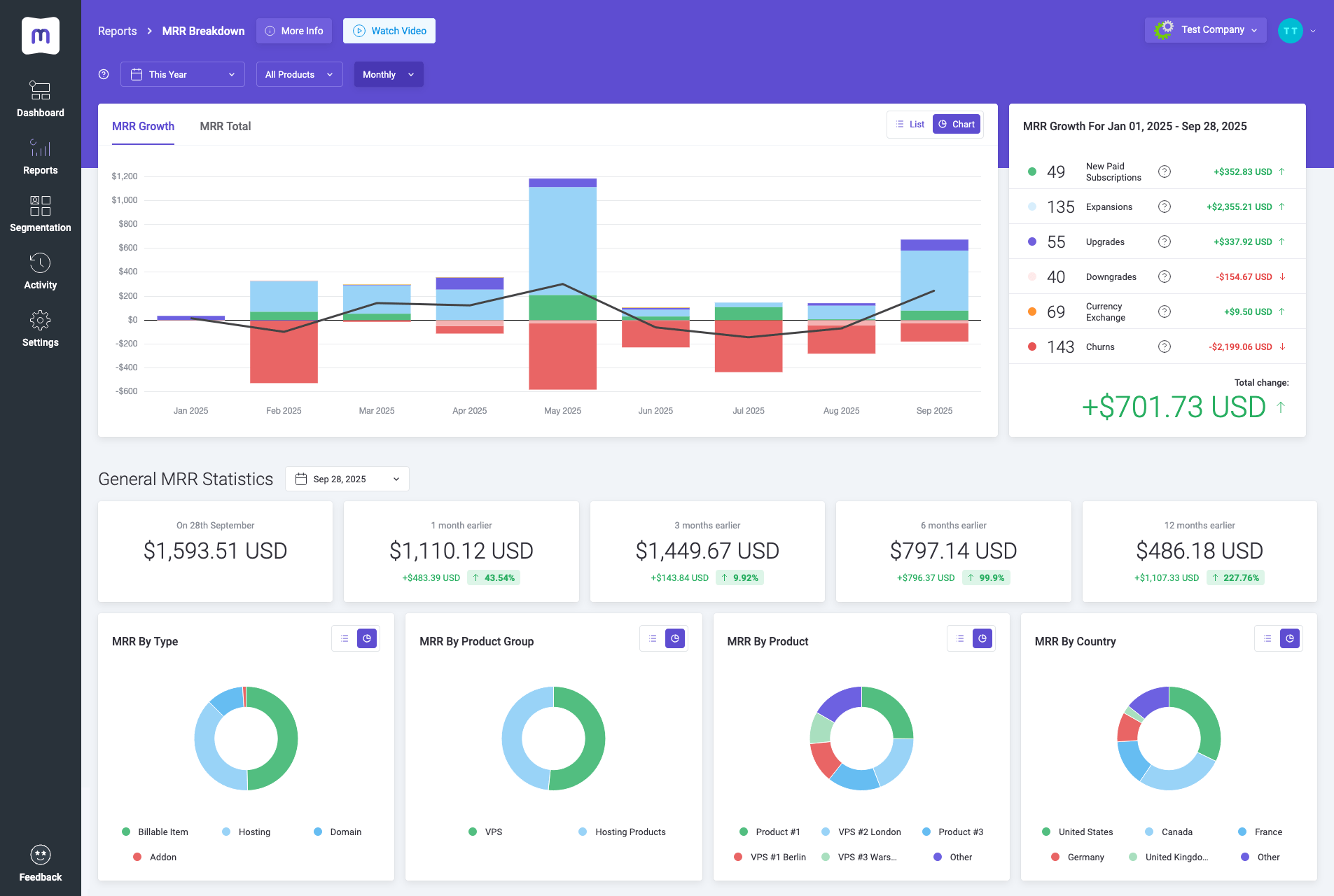Every business that depends on recurring revenue knows one simple truth: the path forward is written in the numbers. They tell you if you’re growing or shrinking, if the churn is just a blip or a worrying trend, if that new pricing experiment is paying off. But here’s the catch: numbers are only as good as the way they’re calculated.
The new MetricsCube release marks a fundamental shift in how your business story gets told. Nearly all from over 90 comprehensive reports have been carefully rebuilt from scratch. And not because the old ones were broken, but because businesses dynamically evolve, and the way we measure them needs to evolve too.
A New Era for Reporting
Rewriting almost every report, over 90% of them, is a major accomplishment, both in terms of engineering effort and business value. The logic behind your data has not been just refreshed, but conceptually and technically improved to cover more real-life scenarios.
Take Monthly Recurring Revenue (MRR) as an example. For years, it’s been the go-to metric for subscription businesses, but anyone who’s looked closely knows it can be tricky. Special offers, late payments, false positives in churn – all of these have a way of distorting the picture, and making the “recurring” part feel less clear than it should.
- Discounts are reflected – no more inflated revenue that ignores the deals you offered.
- Late fees are excluded – because let’s be honest, they don’t reflect recurring income.
- Grace periods are respected – churn is recorded only when customers actually leave, not just because a payment was a few days overdue.
- Billable items are counted properly – they can be now tracked across different billing cycles, so your MRR is a real mirror of what you actually earn.
The new way of calculating monthly revenue makes your data easier to compare over time, while staying less vulnerable to mistakes that come from manual changes in WHMCS.
And since perspective matters just as much, the tables under MRR reports have also been expanded. Until now, they broke results down by product groups, products, addons, and TLDs. From now on, you can go further and view results by country, customer group, or service type, which makes spotting patterns and opportunities that much easier. It’s a few of the many steps we’ve taken to make our reports robust enough even for difficult edge cases, without ever losing sight of simplicity and readability.
Data You Can Truly Own
But better reporting is only part of the story. For many businesses, where the data lives is just as important as how it’s calculated. That’s why this release introduces something many of you have been waiting for: the ability to use self-hosted data servers.
In this case, MetricsCube still delivers the same dashboard experience, the same charts, and the same real-time insights you rely on. The difference is that the raw data never leaves your infrastructure. That means full compliance with privacy requirements, peace of mind around regulations like GDPR, and total control over where your sensitive information lives.
For now, setting it up requires a manual request, but it’s the first step in giving businesses more choice over how and where they manage their information. And just so you know, automated options are already on the horizon.
Growth Demands Change
At the end of the day, metrics are only as valuable as the trust you place in them. And trust is earned through accuracy, transparency, and control. By rebuilding nearly every report and offering the option to keep your data closer to home, we believe MetricsCube takes a big step in that direction. It’s about giving you the confidence to follow your numbers and make bold decisions in a world where everything can hinge on a single figure.






